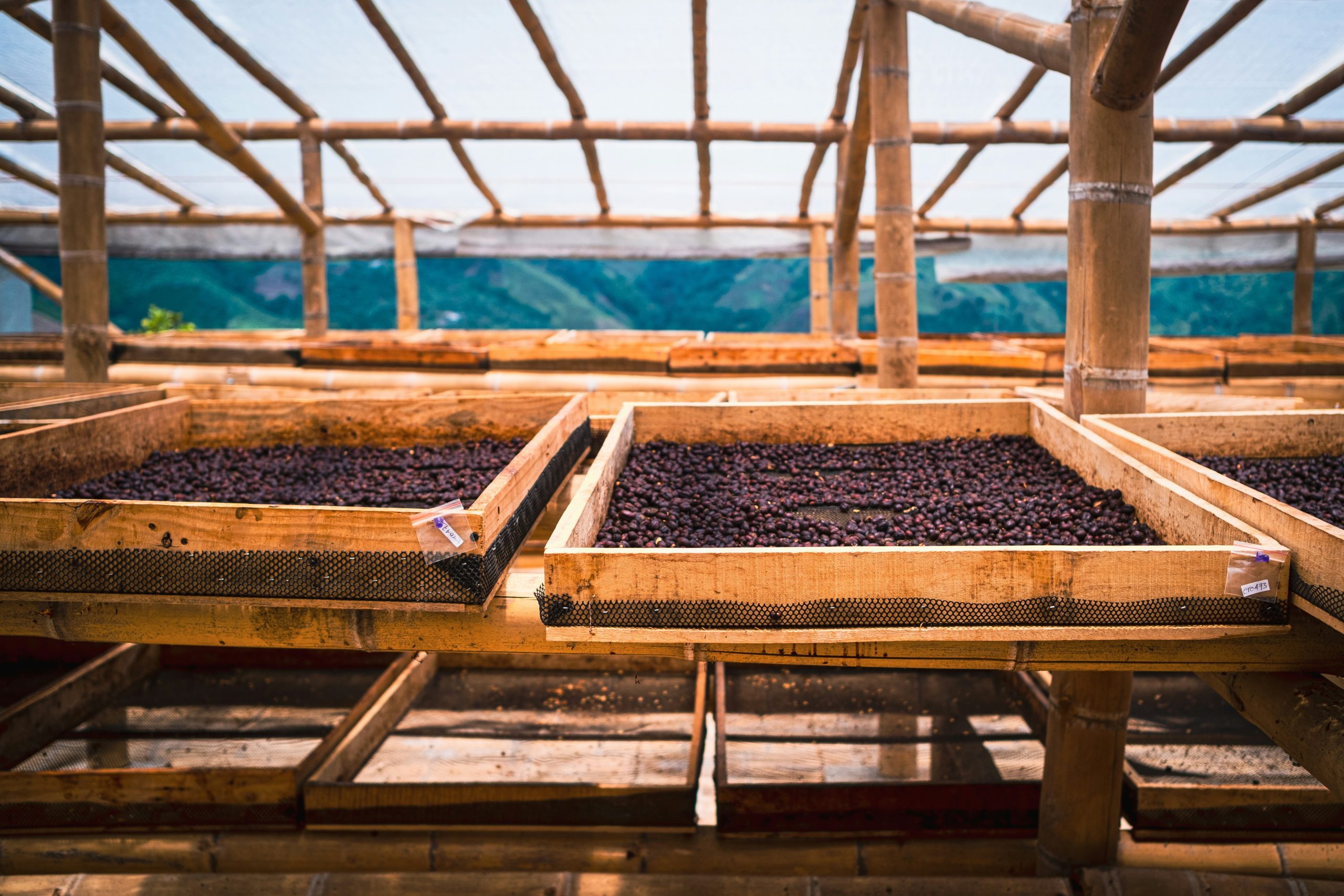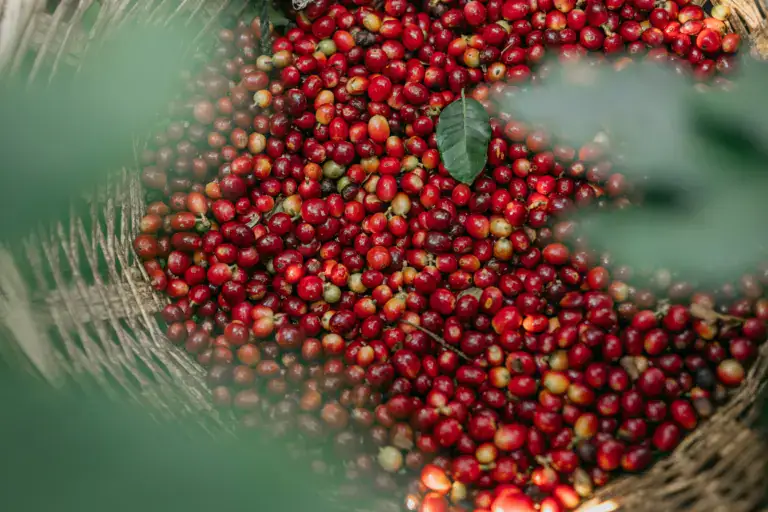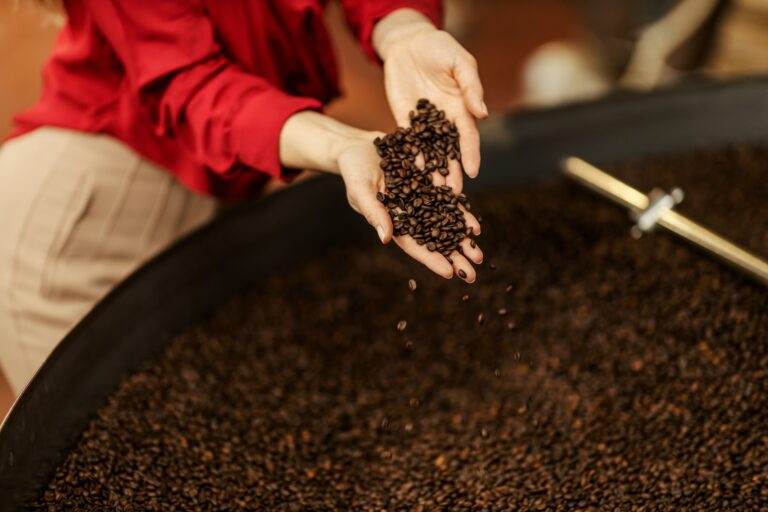Free Shipping on all U.S. orders $50+
Understanding Coffee Processing Methods: How Washed, Natural, and Honey Processing Transform Your Cup
Reading Time: 8 minutes

The journey from coffee cherry to your morning cup involves a crucial step that dramatically impacts flavor: processing. Understanding coffee processing methods can transform how you appreciate and select your coffee, whether you’re a casual drinker or a devoted enthusiast.
What Are Coffee Processing Methods?
Coffee processing refers to the techniques used to remove the coffee bean from the cherry fruit after harvesting. This seemingly simple step profoundly influences the final taste, aroma, and body of your coffee. The three primary methods—washed (wet), natural (dry), and honey (pulped natural)—each create distinct flavor profiles that coffee lovers worldwide have come to recognize and cherish.
The Washed (Wet) Processing Method
How Washed Processing Works
Washed processing, also known as wet processing, begins immediately after harvest. Fresh coffee cherries are pulped to remove the outer skin, leaving the beans covered in a sticky layer called mucilage. The beans then ferment in water tanks for 12-72 hours, allowing natural enzymes to break down the mucilage. After fermentation, the beans are thoroughly washed and dried on patios or raised beds.
Flavor Profile of Washed Coffee
Washed coffees typically exhibit clean, bright acidity with well-defined flavor notes. This processing method allows the bean’s inherent characteristics to shine through without interference from fruit flavors. You’ll often taste floral, citrus, or tea-like qualities in washed coffees, making them popular among specialty coffee roasters and third-wave coffee shops.
Popular Washed Coffee Origins
Central American countries like Guatemala, Costa Rica, and Colombia are renowned for their washed processing expertise. Ethiopian washed coffees from regions like Yirgacheffe also showcase the method’s ability to highlight complex, delicate flavors.
The Natural (Dry) Processing Method
Understanding Natural Processing
Natural processing is the oldest coffee processing method, dating back centuries. Whole coffee cherries are dried intact under the sun for several weeks, typically on raised beds or patios. During this extended drying period, the beans absorb sugars and flavors from the fruit, creating a unique taste experience.
What Natural Processing Does to Flavor
Natural processed coffees are known for their full body, wine-like qualities, and intense fruitiness. The extended contact between bean and cherry creates complex flavor compounds that often result in notes of berries, tropical fruits, and sometimes even fermented or boozy characteristics. These coffees tend to have lower acidity than washed coffees but offer more sweetness and body.
Best Natural Coffee Regions
Ethiopia is the birthplace of natural processing, with regions like Sidamo and Harrar producing exceptional naturally processed beans. Brazil also excels in natural processing, particularly in regions like Cerrado and Mogiana, where consistent weather patterns support proper drying.
The Honey Processing Method Explained
What Is Honey Processing?
Despite its name, honey processing has nothing to do with actual honey. This method, also called pulped natural processing, removes the cherry skin but leaves varying amounts of mucilage on the bean during drying. The sticky mucilage resembles honey in texture and color, hence the name.
Types of Honey Processing
Honey processing comes in several variations based on how much mucilage remains:
Yellow Honey: Approximately 25% mucilage removed, fastest drying time Red Honey: About 50% mucilage removed, moderate drying time Black Honey: Minimal mucilage removed (75-100% retained), longest drying time
Honey Processed Coffee Characteristics
Honey processed coffees bridge the gap between washed and natural methods. They offer more body and sweetness than washed coffees while maintaining cleaner flavors than natural processed beans. Expect notes of brown sugar, caramel, and stone fruits, with a syrupy mouthfeel that distinguishes them from other processing methods.
Other Notable Coffee Processing Methods
Semi-Washed Processing
Popular in Indonesia, semi-washed processing involves removing the cherry skin and some mucilage before a brief fermentation period. This creates the distinctive earthy, herbal flavors associated with Indonesian coffees like those from Sumatra and Sulawesi.
Anaerobic Processing
This innovative method ferments coffee in sealed tanks without oxygen, creating unique flavor compounds. Anaerobic processing can be combined with other methods and often produces wines-like, tropical, or unusual flavor notes that appeal to adventurous coffee drinkers.
Carbonic Maceration
Borrowed from winemaking, this process ferments whole cherries in a carbon dioxide-rich environment. The result is often intensely fruity coffees with enhanced sweetness and complex flavor development.
How Processing Methods Affect Your Coffee Experience
Choosing Based on Your Taste Preferences
Understanding processing methods helps you select coffees that match your palate:
- Prefer bright, clean flavors? Choose washed processed coffees
- Love fruity, wine-like notes? Natural processed coffees are your best bet
- Want balanced sweetness and body? Honey processed options offer the perfect middle ground
Brewing Considerations by Processing Method
Different processing methods may perform better with specific brewing techniques:
Washed coffees excel in pour-over methods like V60 or Chemex, which highlight their clarity and brightness.
Natural coffees work beautifully in full-immersion methods like French press or AeroPress, which emphasize their body and complexity.
Honey processed coffees are versatile and work well across various brewing methods, making them excellent for espresso and drip coffee alike.
The Impact of Climate and Processing
Environmental factors significantly influence processing success. Regions with consistent dry seasons favor natural processing, while areas with reliable water sources excel at washed processing. Climate change is pushing some coffee regions to adapt their traditional processing methods, leading to exciting innovations in coffee processing techniques.
Quality Factors in Coffee Processing
What Makes Great Processing
Successful coffee processing requires careful attention to timing, temperature, and moisture levels. Proper fermentation control prevents over-fermentation, which can create undesirable sour or vinegar-like flavors. Consistent drying prevents mold development and ensures even moisture distribution throughout the bean.
Processing and Coffee Grading
Processing quality directly impacts coffee grading and pricing. Specialty coffee buyers evaluate processing success through cupping, looking for clean flavors, balanced acidity, and absence of processing defects. Well-processed coffees command premium prices in the specialty market.
The Future of Coffee Processing
Innovation in Processing Methods
Coffee processors continue experimenting with hybrid methods, controlled fermentation, and extended fermentation times. These innovations create new flavor possibilities while helping farmers add value to their crops. Expect to see more experimental processing methods in specialty coffee shops as roasters seek unique flavor profiles.
Sustainability in Processing
Modern processing increasingly focuses on water conservation and waste reduction. Eco-friendly processing methods reduce environmental impact while maintaining coffee quality, supporting sustainable coffee production for future generations.
Conclusion: Elevating Your Coffee Knowledge
Understanding coffee processing methods transforms casual coffee drinking into an informed appreciation of craftsmanship. Whether you prefer the bright clarity of washed coffees, the fruity complexity of natural processing, or the balanced sweetness of honey processing, each method offers unique pleasures for the discerning coffee lover.
Next time you purchase coffee, consider the processing method listed on the bag. Experiment with different processing styles to discover your preferences and expand your coffee palate. The world of coffee processing offers endless opportunities for exploration and enjoyment.



